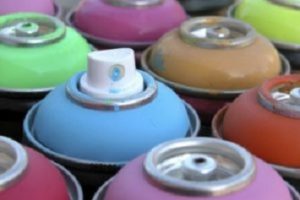In a much anticipated development, the EPA is proposing to add aerosol cans to the federal universal waste program. If finalized, the addition would simplify waste handling for many sectors and provide particular relief to the retail sector, which currently must manage at least some of the vast population of aerosol cans under the full Resource Conservation and Recovery Act (RCRA) Subtitle C hazardous waste regulations. The Consumer Specialty Products Association (CSPA) estimates that 3.82 billion aerosol cans were filled in the United States in 2015 for use by commercial and industrial facilities as well as by households.

The EPA notes that there are 4,225 large quantity generators (LQGs) of waste aerosol cans in the retail sector, which are subject to Subtitle C, more than three times the LQGs in the next sector—manufacturing. It has long been argued that in writing RCRA, Congress never intended retail stores to be subject to the same hazardous waste regulations as manufacturers and facilities in other industries that generate the majority of hazardous waste. According to the EPA, LQGs in the manufacturing sector annually generate about 6,767 tons of aerosol cans subject to Subtitle C, more than 17 times what is generated by retail LQGs.
Retail Sector Strategy
In 2014, the EPA requested public comment on how hazardous waste in the retail sector could be more reasonably regulated. Approximately 35 percent of commenters specifically suggested that discarded aerosol cans be managed as universal waste. In 2016, the Agency followed up with its Strategy for Addressing the Retail Sector under RCRA’s Regulatory Framework. One action item in the strategy was to explore adding hazardous waste aerosol cans to the universal waste rule.
Handlers and Transporters
Promulgated by the EPA in 1995, the universal waste rule established a streamlined hazardous waste management system for widely generated hazardous wastes as a way to encourage environmentally sound collection and proper management of the wastes within the system. Currently, the universal waste program covers hazardous waste batteries, certain hazardous waste pesticides, mercury-containing equipment, and hazardous waste lamps.
The program applies to handlers and transporters that generate or manage items designated as a universal waste. Handlers include both facilities that generate universal waste and facilities that receive universal waste from other universal waste handlers, accumulate the universal waste, and then send the universal waste to another handler, a destination facility, or a foreign designation.
The streamlined standards include requirements for storage, labeling and marking, preparing the waste for shipment off-site, employee training, response to releases and, in the case of large quantity handlers, notification and tracking of universal waste shipments. The regulations distinguish between large quantity handlers of universal waste (those that handle more than 5,000 kilograms (kg) of total universal waste at one time) and small quantity handlers of universal waste (those that handle 5,000 kg or less of universal waste at one time). The 5,000-kg accumulation criterion applies to the quantity of all universal wastes accumulated.
The primary difference between the universal waste transporter requirements and the Subtitle C transportation requirements is that no manifest is required for transport of universal waste.
State Experience
The EPA applies eight factors to determine if a waste should be included in the universal waste program, including if the waste is generated by a wide variety of generators, if the waste is generated in relatively small quantities, and if risks posed by the waste during accumulation and transport should be relatively low compared to risks posed by other hazardous waste. While not every factor must be met for a waste to be appropriately regulated under the universal waste program, the EPA found that waste aerosol cans comported with each of the factors.
Another factor, and one the EPA seems to find particularly important, is whether there is state experience with regulating a waste as universal. Four states—California, Colorado, New Mexico, and Utah—already have universal waste aerosol can programs in place. The EPA says it was informed by waste management officials in these states that their programs have been operating well and achieving their objective of facilitating safe management of hazardous waste aerosol cans.
“In particular, state officials from both California and Colorado stated to EPA that their respective aerosol can universal waste programs have been in effect since 2002, and they have not identified any problems with compliance with the standards,” said the EPA.
Two additional states—Minnesota and Ohio—have proposed to add aerosol cans to their universal waste regulations.
The prepublication version of the proposed rule is at here.
